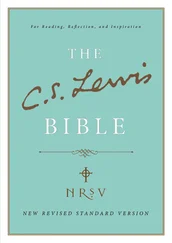Standard Template Library Programmer's Guide
Здесь есть возможность читать онлайн «Standard Template Library Programmer's Guide» весь текст электронной книги совершенно бесплатно (целиком полную версию без сокращений). В некоторых случаях можно слушать аудио, скачать через торрент в формате fb2 и присутствует краткое содержание. Жанр: Программирование, Справочники, на английском языке. Описание произведения, (предисловие) а так же отзывы посетителей доступны на портале библиотеки ЛибКат.
- Название:Standard Template Library Programmer's Guide
- Автор:
- Жанр:
- Год:неизвестен
- ISBN:нет данных
- Рейтинг книги:4 / 5. Голосов: 1
-
Избранное:Добавить в избранное
- Отзывы:
-
Ваша оценка:
- 80
- 1
- 2
- 3
- 4
- 5
Standard Template Library Programmer's Guide: краткое содержание, описание и аннотация
Предлагаем к чтению аннотацию, описание, краткое содержание или предисловие (зависит от того, что написал сам автор книги «Standard Template Library Programmer's Guide»). Если вы не нашли необходимую информацию о книге — напишите в комментариях, мы постараемся отыскать её.
Standard Template Library Programmer's Guide — читать онлайн бесплатно полную книгу (весь текст) целиком
Ниже представлен текст книги, разбитый по страницам. Система сохранения места последней прочитанной страницы, позволяет с удобством читать онлайн бесплатно книгу «Standard Template Library Programmer's Guide», без необходимости каждый раз заново искать на чём Вы остановились. Поставьте закладку, и сможете в любой момент перейти на страницу, на которой закончили чтение.
Интервал:
Закладка:
[2] A comparison with vector is instructive. Suppose that i is a valid vector::iterator . If an element is inserted or removed in a position that precedes i , then this operation will either result in i pointing to a different element than it did before, or else it will invalidate i entirely. (A vector::iterator will be invalidated, for example, if an insertion requires a reallocation.) However, suppose that i and j are both iterators into a vector, and there exists some integer n such that i == j + n . In that case, even if elements are inserted into the vector and i and j point to different elements, the relation between the two iterators will still hold. An slist is exactly the opposite: iterators will not be invalidated, and will not be made to point to different elements, but, for slist iterators, the predecessor/successor relationship is not invariant.
[3] This member function relies on member template functions, which at present (early 1998) are not supported by all compilers. If your compiler supports member templates, you can call this function with any type of input iterator. If your compiler does not yet support member templates, though, then the arguments must either be of type const value_type* or of type slist::const_iterator .
[4] A similar property holds for all versions of insert() and erase() . Slist::insert() never invalidates any iterators, and slist::erase() only invalidates iterators pointing to the elements that are actually being erased.
[5] This member function relies on member template functions, which at present (early 1998) are not supported by all compilers. You can only use this member function if your compiler supports member templates.
[6] The reverse algorithm works only for bidirectional iterators. Even if reverse were extended to work with forward iterators, however, it would still be useful to have the reverse member function: it has different iterator invalidation semantics. That is, the reverse member function preserves the value that each iterator points to. Note also that the algorithm reverse(L.begin(), L.end()) uses T 's assignment operator, but the member function L.reverse() does not.
[7] The sort algorithm works only for random access iterators. In principle, however, it would be possible to write a sort algorithm that also accepted forward iterators. Even if there were such a version of sort , it would still be useful for slist to have a sort member function. That is, sort is provided as a member function not only for the sake of efficiency, but also because of the property that it preserves the values that list iterators point to.
Bidirectional Iterator, Reversible Container, Sequence, list , vector
bit_vector
Category: containers
Component type: type
A bit_vector is essentially a vector : it is a Sequence that has the same interface as vector . The main difference is that bit_vector is optimized for space efficiency. A vector always requires at least one byte per element, but a bit_vector only requires one bit per element.
Warning: the name bit_vector will be removed in a future release of the STL. The only reason that bit_vector is a separate class, instead of a template specialization of vector , is that this would require partial specialization of templates. On compilers that support partial specialization, bit_vector is a specialization of vector . The name bit_vector is a typedef . This typedef is not defined in the C++ standard, and is retained only for backward compatibility.
bit_vector V(5);
V[0] = true;
V[1] = false;
V[2] = false;
V[3] = true;
V[4] = false;
for (bit_vector::iterator i = V.begin(); i < V.end(); ++i) cout << (*i ? '1' : '0');
cout << endl;
Defined in the standard header vector, and in the nonstandard backward-compatibility header bvector.h.
None. Bit_vector is not a class template.
Random access container, Back insertion sequence.
None.
None.
| Member | Where defined | Description |
|---|---|---|
value_type |
Container | The type of object stored in the bit_vector: bool |
reference |
bit_vector |
A proxy class that acts as a reference to a single bit. See below for details. |
| const_reference | Container | Const reference to value_type . In bit_vector this is simply defined to be bool . |
size_type |
Container | An unsigned integral type. |
difference_type |
Container | A signed integral type. |
iterator |
Container | Iterator used to iterate through a bit_vector . |
const_iterator |
Container | Const iterator used to iterate through a bit_vector . |
reverse_iterator |
Reversible Container | Iterator used to iterate backwards through a bit_vector . |
const_reverse_iterator |
Reversible Container | Const iterator used to iterate backwards through a bit_vector . |
iterator begin() |
Container | Returns an iterator pointing to the beginning of the bit_vector . |
iterator end() |
Container | Returns an iterator pointing to the end of the bit_vector . |
const_iterator begin() const |
Container | Returns a const_iterator pointing to the beginning of the bit_vector . |
const_iterator end() const |
Container | Returns a const_iterator pointing to the end of the bit_vector . |
reverse_iterator rbegin() |
Reversible Container | Returns a reverse_iterator pointing to the beginning of the reversed bit_vector. |
reverse_iterator rend() |
Reversible Container | Returns a reverse_iterator pointing to the end of the reversed bit_vector. |
const_reverse_iterator rbegin() const |
Reversible | Container Returns a const_reverse_iterator pointing to the beginning of the reversed bit_vector. |
const_reverse_iterator rend() const |
Reversible Container | Returns a const_reverse_iterator pointing to the end of the reversed bit_vector. |
size_type size() const |
Container | Returns the number of elements in the bit_vector . |
size_type max_size() const |
Container | Returns the largest possible size of the bit_vector . |
size_type capacity() const |
bit_vector |
See below. |
bool empty() const |
Container | true if the bit_vector 's size is 0 . |
reference operator[](size_type n) |
Random Access Container | Returns the n 'th element. |
const_reference operator[](size_type n) const |
Random Access Container | Returns the n 'th element. |
bit_vector() |
Container | Creates an empty bit_vector. |
bit_vector(size_type n) |
Sequence | Creates a bit_vector with n elements. |
bit_vector(size_type n, bool t) |
Sequence | Creates a bit_vector with n copies of t . |
bit_vector(const bit_vector&) |
Container | The copy constructor. |
template bit_vector(InputIterator, InputIterator)[1] |
Sequence | Creates a bit_vector with a copy of a range. |
~bit_vector() |
Container | The destructor. |
bit_vector& operator=(const bit_vector&) |
Container | The assignment operator |
void reserve(size_t) |
bit_vector |
See below. |
reference front() |
Sequence | Returns the first element. |
const_reference front() const |
Sequence | Returns the first element. |
reference back() |
Back Insertion | Sequence Returns the last element. |
const_reference back() const |
Back Insertion Sequence | Returns the last element. |
void push_back(const T&) |
Back Insertion Sequence | Inserts a new element at the end. |
void pop_back() |
Back Insertion Sequence | Removes the last element. |
void swap(bit_vector&) |
Container | Swaps the contents of two bit_vectors. |
void swap(bit_vector::reference x, bit_vector::reference y) |
bit_vector |
See below. |
iterator insert(iterator pos, bool x) |
Sequence | Inserts x before pos . |
template void insert(iterator pos, InputIterator f, InputIterator l)[1] |
Sequence | Inserts the range [f, l) before pos . |
void insert(iterator pos, size_type n, bool x) |
Sequence | Inserts n copies of x before pos . |
void erase(iterator pos) |
Sequence | Erases the element at position pos . |
void erase(iterator first, iterator last) |
Sequence | Erases the range [first, last) |
void clear() |
Sequence | Erases all of the elements. |
bool operator==(const bit_vector&, const bit_vector&) |
Forward Container | Tests two bit_vectors for equality. This is a global function, not a member function. |
bool operator<(const bit_vector&, const bit_vector&) |
Forward Container | Lexicographical comparison. This is a global function, not a member function. |
These members are not defined in the Random access container and Back insertion sequence requirements, but are specific to vector .
Читать дальшеИнтервал:
Закладка:
Похожие книги на «Standard Template Library Programmer's Guide»
Представляем Вашему вниманию похожие книги на «Standard Template Library Programmer's Guide» списком для выбора. Мы отобрали схожую по названию и смыслу литературу в надежде предоставить читателям больше вариантов отыскать новые, интересные, ещё непрочитанные произведения.
Обсуждение, отзывы о книге «Standard Template Library Programmer's Guide» и просто собственные мнения читателей. Оставьте ваши комментарии, напишите, что Вы думаете о произведении, его смысле или главных героях. Укажите что конкретно понравилось, а что нет, и почему Вы так считаете.











